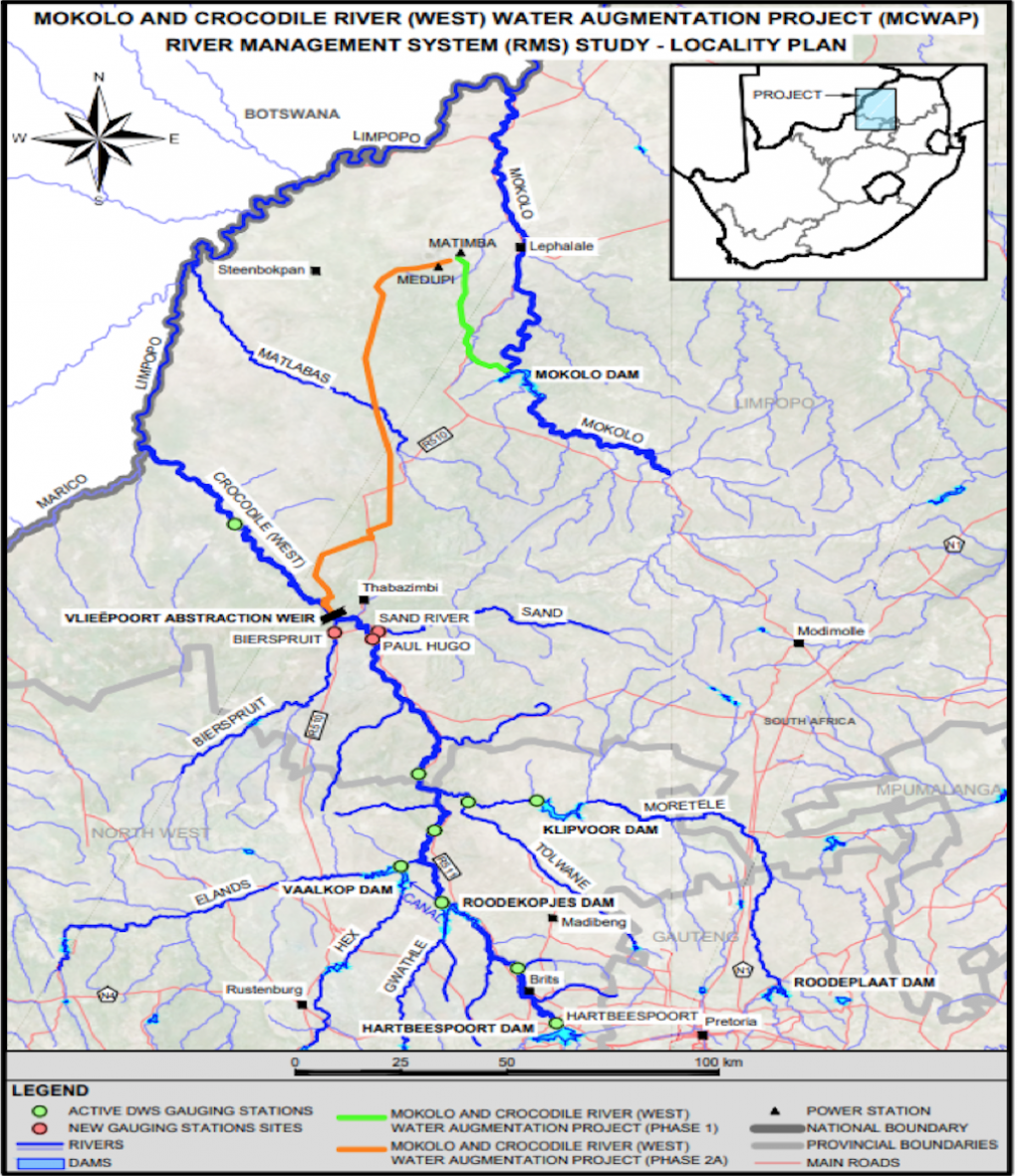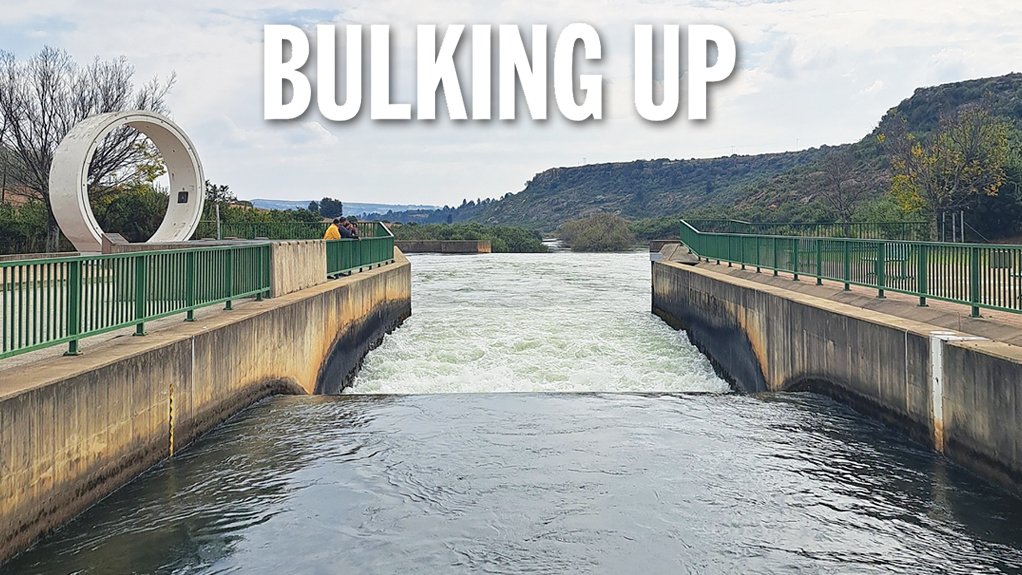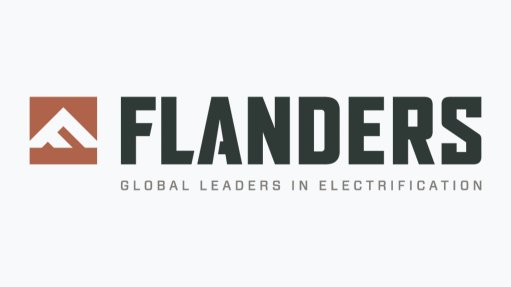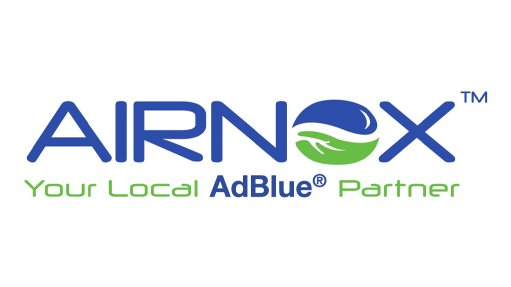TCTA unpacks progress being made on key bulk water projects



BUSINESS BOOST The MCWAP-2A project commits water to Eskom and Exxaro, as well as municipalities and communities
The Trans-Caledon Tunnel Authority (TCTA) has come a long way since being established in 1986 to fund and implement the South African portion of the Lesotho Highlands Water Project (LHWP), gaining momentum on several other projects critical to South Africa’s economy.
Since its original mandate – financing, building, operating and maintaining the LHWP’s Delivery Tunnel North – the TCTA has received several directives, transforming into a multiproject entity tasked with funding and implementing a portfolio of bulk raw water infrastructure projects on behalf of the Department of Water and Sanitation (DWS).
Discussing some of the projects, which are at various phases of preparation, implementation and closure, TCTA project management and implementation executive manager Johannes Mavuso says that the authority is accelerating its momentum as it works towards completion of the critical water projects.
“Over time, our mandate has been expanded to include those projects that cannot be funded from the fiscus. We focus on the water infrastructure projects which are commercially viable and require water offtake agreements,” Mavuso tells Engineering News & Mining Weekly, noting that, if a project is commercially viable, the market can be approached to raise funding.
In addition to its work on the LHWP, the TCTA is progressing the uMkhomazi Water Project Phase 1 (uMWP-1), the Berg River Voëlvlei Augmentation Scheme (BRVAS) and Phase-2A of the Mokolo-Crocodile Water Augmentation Project (MCWAP-2A) and is also overseeing the operations and maintenance of short-term interventions for acid mine drainage treatment plants in the Western, Central and Eastern Basins of the Witwatersrand goldfields.
“Without some of these projects, we cannot develop our economy. Most of these commercially viable projects are intended for the industry, with many having a social component that benefits the local communities.”
As critical projects, they will generate employment, increase the economic activities around the project areas and improve the construction capacity that has been seriously constrained in the country, he points out.
After mitigating and managing the various issues and risks delaying these projects, Mavuso says it is now a matter of maintaining the momentum that has been gained so that the TCTA can move towards the implementation phase of these projects.
Projects in Focus
The TCTA is currently undertaking the BRVAS project, which was identified as the preferred option to augment the yield of the in-deficit Western Cape Water Supply System in the short term and was assigned an emergency status (schedule driven project) to alleviate the water crisis in Cape Town and avert the so-called Day Zero in 2017.
A high-risk execution approach was adopted with limited project scope definition and the contracting strategy was adapted to accommodate the water delivery date of 2019/20.
The TCTA received the DWS directive in May 2017, which entailed the parallel procurement of the professional service provider (PSP) and the design and build contractor to enable water delivery during 2029/30.
The BRVAS, operational during the winter months, will abstract and pump winter flows from the Berg river to the existing Voëlvlei dam, improving its yield by 23-million cubic metres a year (m3/y). The project consists of a diversion weir in the Berg river, a 4 m3/s pumpstation, a 6.3-km-long, 1.7-m-diameter steel pipeline with an outlet into the Voëlvlei dam and ancillary works.
There are about five municipalities that will be the beneficiaries of this project, along with irrigators that rely on water supply from the City of Cape Town, Mavuso comments.
He tells Engineering News & Mining Weekly that, overall, there has been good progress made in the implementation of the BRVAS over the last year, with construction expected to start in July 2025.
In February 2021, the TCTA appointed PSP, the Amanzi Entaba joint venture, to improve the level of scope definition by embarking on the conceptual design, which was successfully completed in February 2022 and resulted in design development and improvements which were subsequently approved by the DWS.
This further resulted in material changes to the project implementation timelines and capital cost to completion. This was followed by cost saving initiatives which led to the optimised Project Charter in August 2022.
“The material changes to the project implementation timelines and cost to completion were attributed to the original adopted design and build contracting strategy when the project was assigned an emergency status. The project remains critical but not urgent and as a result we have revisited the contracting strategy and the TCTA executive committee approved the revised traditional design to build contracting strategy for the project,” he explains.
With the cost optimisation initiatives, the project became more affordable for the intended users, he says, adding that this enabled the DWS, supported by the TCTA, to start a consultative process with the users with the aim of concluding the water supply agreements in due course.
The final phases of the process to raise the funding are now under way and intended to be completed later this year, enabling the procurement process for the appointment of the PSP to develop and finalise tender designs and specifications for the construction phase of the project.
Meanwhile, on the MCWAP-2A project, which is intended to increase the water supply to State-owned power utility Eskom for the Medupi and Matimba power stations, mining group Exxaro, the local municipality and others, is in the final stages of the funding process.
The TCTA aims to conclude the funding process within the next three months as lenders undertake and conclude their due diligence processes.
The TCTA received the DWS directive in November 2017 and started with the project preparation phase, which included the appointment of the PSP, Gibbs Bigen Africa Services and Nyeleti Consulting joint venture, to start with early engineering works and tender designs and specifications for the construction phase of the project.
The project comprises a 125 m3/y abstraction weir at the Crocodile river, pumpstations and a 160 km pipeline to transfer 75 m3/y of water from the Crocodile river, near Thabazimbi, to the Lephalale area, as well as a River Management System, initially designated for completion in a third phase, which is now incorporated into Phase 2A.
The TCTA has already finalised the tender document for the construction phase of the project and has secured 50% of the land and servitudes required to enable construction.
“The process to acquire the remaining 50% of the land and servitudes has commenced and will be concluded prior to the award of the construction contract. The tender document for the construction phase will only be issued to the market once the funding process is concluded.”
In addition, work on the tender design and specifications for the River Management System has started, with plans to be finalised later this year.
“We have also secured environmental authorisation from the Department of Forestry, Fisheries and the Environment (DFFE). Our environmental management plans were also approved,” Mavuso confirms.
Further, approval has been secured for all the borrow pits permits that will be required during the construction phase.
“We are getting ready to commence with the procurement processes and construction on this project. What we are now focusing on is to conclude the funding process, obtain the remaining land and servitudes and obtain the water use licenses for the construction phases of the projects. These processes have already started and will be concluded in time to enable the procurement of the contractor and commencement of construction activities,” he says.
The uMWP-1 is also being pursued in parallel with the aim of augmenting the in-deficit uMgeni System, which is the main water source supplying about six-million people and industries in the Durban and Pietermaritzburg regions.
In February 2019, the DWS issued the TCTA with a directive to fund and implement the bulk raw water component of the project, which will transfer water from the uMkhomazi river to increase the yield of the Mgeni System from 394-million m3/y to 608-million m3/y.
The project comprises the 81-m-high Smithfield dam and associated infrastructure in the uMkhomazi river near Bulwer; water conveyance infrastructure, including a 33 km, 3.5-m- diameter raw water tunnel from the Smithfield dam reservoir to the uMlaza river valley and a 5.1 km, 2.6-m-diameter raw water pipeline from the outlet portal of the transfer tunnel to Umgeni Water’s proposed water treatment works in the uMlazi river valley.
The environmental authorisations and approved preconstruction environmental management programmes are now in place for the water conveyance infrastructure and the Smithfield dam and associated infrastructure. However, the construction and operation environmental management programmes are not yet in place and will only be finalised once the early engineering work and biodiversity scope and plan for the tunnel and dam are finalised and approved by the by the DFFE.
“We are now in the process of compiling the tender documents which will enable TCTA to procure the services of the PSPs for the dam and the water conveyance infrastructure (tunnel and pipeline).
“We are hoping that, in the next two to three months, the tender document for procuring the services of the PSP for the water conveyance infrastructure, which is on the critical path of the project, will be issued into the market so that we can start with the early engineering works, the development of tender designs and specifications for the main contractor that we will appoint at a later stage.”
The DWS, supported by the TCTA, has also started with the consultative process which will enable the finalisation of the water supply agreements with the users by later this year.
“This will then assist us also to start with the funding process for the project which will enable the commencement of the procurement processes for the appointment of the contractors at a later stage.
Meanwhile, LHWP Phase 2, building on Phase 1, which was completed in 2003, was officially launched on May 23 at the Polihali dam.
The long-standing binational infrastructure project includes the construction of a network of tunnels and the dams to transfer water from the Orange-Senqu river in the Lesotho Highlands to South Africa and to use the water delivery system to provide hydroelectric power to Lesotho.
Phase 2 will increase the current water supply from 780-million cubic metres a year incrementally to more than 1.27-billion cubic metres a year by completion in 2028.
In November, the Lesotho Highlands Development Authority (LHDA) announced the award of two contracts – LHWP Phase 2’s biggest to date – for the construction of the Polihali dam and the Polihali transfer tunnel, signalling the start of the “final lap” of the water transfer infrastructure construction.
The Polihali dam, a 165-m-high concrete- faced rockfill dam, similar to the Mohale dam, which was constructed in Phase 1 of the LHWP, will create a reservoir on the Senqu and Khubelu rivers with a surface area of 5 053 ha. The infrastructure also includes a spillway, a compensation outlet structure and a mini- hydropower station.
The Polihali transfer tunnel will transfer water by gravity from the Polihali reservoir to the Katse reservoir, before being transferred through the delivery tunnel to the Muela hydropower station constructed in Phase 1, and then on to the Ash river outfall outside Clarens, in the Free State, on its way to Gauteng.
Article Enquiry
Email Article
Save Article
Feedback
To advertise email advertising@creamermedia.co.za or click here
Comments
Announcements
What's On
Subscribe to improve your user experience...
Option 1 (equivalent of R125 a month):
Receive a weekly copy of Creamer Media's Engineering News & Mining Weekly magazine
(print copy for those in South Africa and e-magazine for those outside of South Africa)
Receive daily email newsletters
Access to full search results
Access archive of magazine back copies
Access to Projects in Progress
Access to ONE Research Report of your choice in PDF format
Option 2 (equivalent of R375 a month):
All benefits from Option 1
PLUS
Access to Creamer Media's Research Channel Africa for ALL Research Reports, in PDF format, on various industrial and mining sectors
including Electricity; Water; Energy Transition; Hydrogen; Roads, Rail and Ports; Coal; Gold; Platinum; Battery Metals; etc.
Already a subscriber?
Forgotten your password?
Receive weekly copy of Creamer Media's Engineering News & Mining Weekly magazine (print copy for those in South Africa and e-magazine for those outside of South Africa)
➕
Recieve daily email newsletters
➕
Access to full search results
➕
Access archive of magazine back copies
➕
Access to Projects in Progress
➕
Access to ONE Research Report of your choice in PDF format
RESEARCH CHANNEL AFRICA
R4500 (equivalent of R375 a month)
SUBSCRIBEAll benefits from Option 1
➕
Access to Creamer Media's Research Channel Africa for ALL Research Reports on various industrial and mining sectors, in PDF format, including on:
Electricity
➕
Water
➕
Energy Transition
➕
Hydrogen
➕
Roads, Rail and Ports
➕
Coal
➕
Gold
➕
Platinum
➕
Battery Metals
➕
etc.
Receive all benefits from Option 1 or Option 2 delivered to numerous people at your company
➕
Multiple User names and Passwords for simultaneous log-ins
➕
Intranet integration access to all in your organisation
















